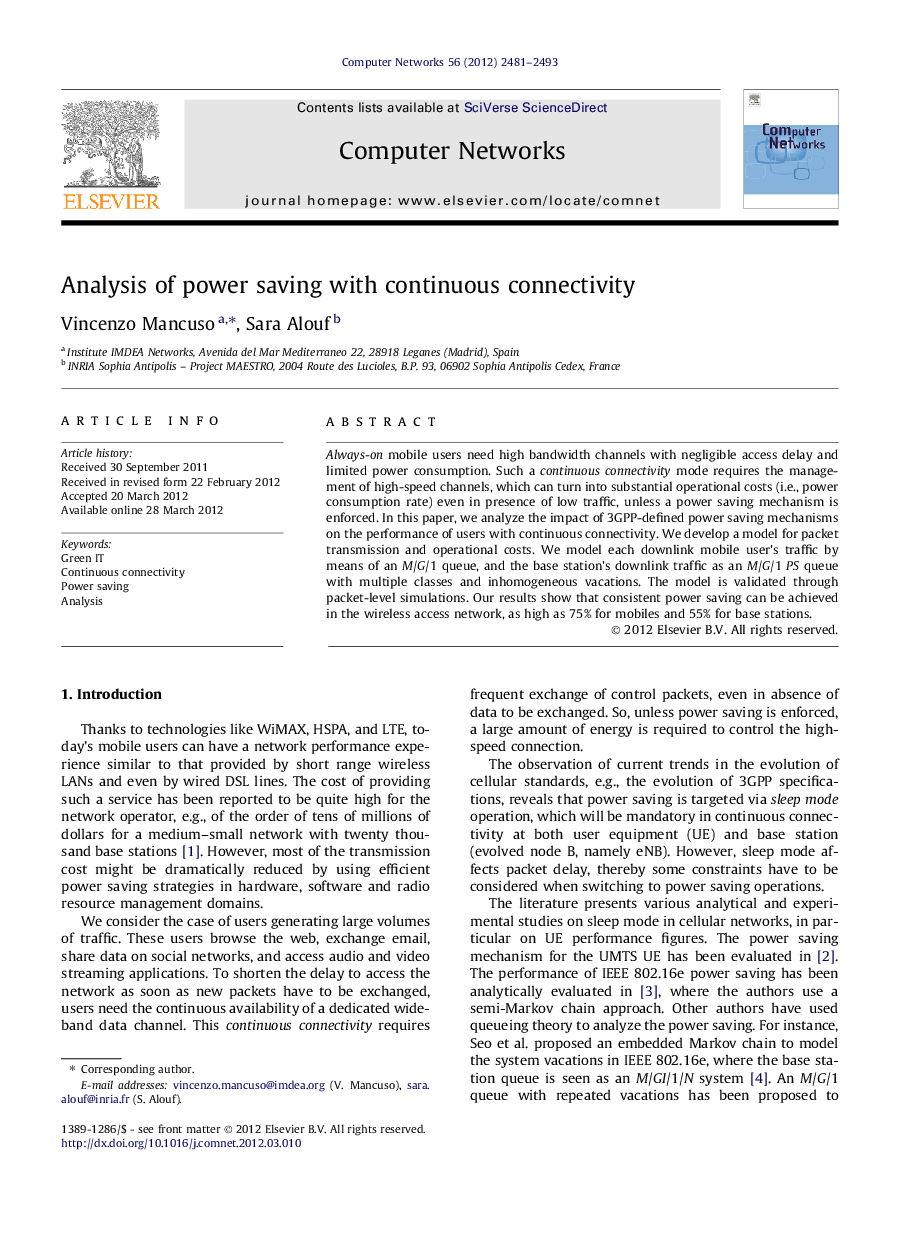| Article ID | Journal | Published Year | Pages | File Type |
|---|---|---|---|---|
| 10340062 | Computer Networks | 2012 | 13 Pages |
Abstract
Always-on mobile users need high bandwidth channels with negligible access delay and limited power consumption. Such a continuous connectivity mode requires the management of high-speed channels, which can turn into substantial operational costs (i.e., power consumption rate) even in presence of low traffic, unless a power saving mechanism is enforced. In this paper, we analyze the impact of 3GPP-defined power saving mechanisms on the performance of users with continuous connectivity. We develop a model for packet transmission and operational costs. We model each downlink mobile user's traffic by means of an M/G/1 queue, and the base station's downlink traffic as an M/G/1 PS queue with multiple classes and inhomogeneous vacations. The model is validated through packet-level simulations. Our results show that consistent power saving can be achieved in the wireless access network, as high as 75% for mobiles and 55% for base stations.
Keywords
Related Topics
Physical Sciences and Engineering
Computer Science
Computer Networks and Communications
Authors
Vincenzo Mancuso, Sara Alouf,
